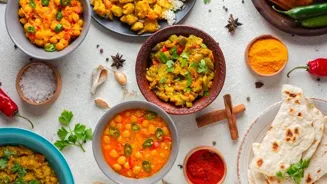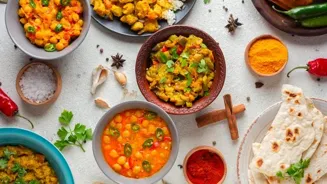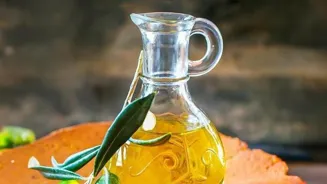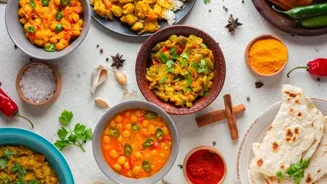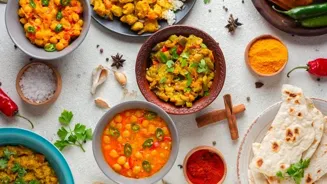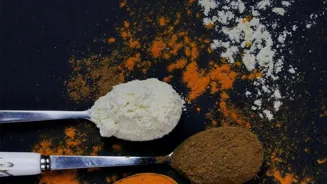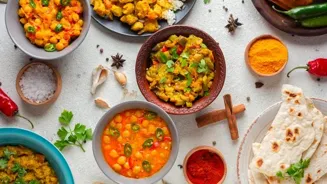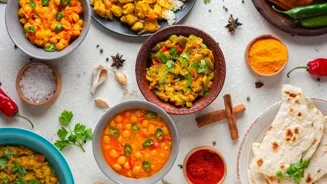Unveiling the Essence of Indian Cuisine: The Magic of Fresh Ingredients. Dive into the world of vibrant flavors!
Indian cuisine, a kaleidoscope of flavors and aromas, owes its unparalleled richness to the
quality of its ingredients. More than complex recipes and intricate techniques, it's the freshness of the vegetables, spices, and herbs that truly elevate a dish from ordinary to extraordinary.
When ingredients are in their prime, they burst with natural oils, intense flavors, and vibrant colors, lending an authenticity that's simply impossible to replicate with stale or processed alternatives.
Using fresh produce ensures that every bite is packed with essential nutrients, benefiting not just the palate but also overall health.
The difference between a hastily made meal and a lovingly prepared feast often boils down to the thoughtful selection and preparation of fresh, high-quality ingredients.
Explore local markets for fresh, local produce direct from farmers
Sourcing fresh ingredients in India can be a rewarding experience, connecting you directly with local farmers and fostering a greater appreciation for the food you consume. Start by exploring your local farmers' markets or "mandis.
" These bustling hubs offer a wide array of seasonal produce, often harvested just hours before being sold. Engage with the vendors, ask about the origin of their produce, and don't hesitate to sample before you buy.
Direct interaction with farmers gives you valuable insights into their farming practices and the journey of your food from the field to your plate.
Smaller, independent grocery stores can also be excellent sources of fresh, locally sourced ingredients, prioritizing quality over mass-produced options. Remember to choose vegetables and fruits that are firm, brightly colored, and free from blemishes.
Grinding whole spices at home enhances flavor and aroma
When it comes to spices, buying whole spices and grinding them at home is a game-changer. The aroma and flavor of freshly ground spices are significantly more potent than their pre-ground counterparts, which often lose their volatile oils and flavor compounds over time.
Look for small spice shops or "khari baolis" that sell whole spices in bulk. These shops typically offer a wider variety and higher quality compared to pre-packaged options found in supermarkets.
Store your spices in airtight containers away from direct sunlight and heat to preserve their freshness. Roasting spices lightly before grinding can further enhance their aroma and flavor, unlocking a deeper complexity in your dishes.
Don't underestimate the power of fresh herbs like coriander, mint, and curry leaves; they add a burst of freshness and vibrancy to any Indian meal, so add them at the end.
Grow herbs and veggies in small spaces for fresh ingredients and connection to nature
Consider growing your own herbs and vegetables, even if you have limited space. A small kitchen garden or even a few potted plants can provide a constant supply of fresh, flavorful ingredients right at your fingertips.
Herbs like basil, mint, coriander, and curry leaves are relatively easy to grow in containers, as are vegetables like tomatoes, chilies, and spinach.
Gardening not only ensures a steady supply of fresh produce but also connects you with the natural world, fostering a sense of responsibility and appreciation for the food you eat. It's a therapeutic activity that can enrich your life while simultaneously elevating your culinary skills.
Soaking lentils & legumes before cooking enhances nutrition & digestibility in Indian cuisine
The practice of soaking lentils and legumes overnight is another crucial step in Indian cooking that deserves attention. Soaking not only reduces cooking time but also removes phytic acid, an anti-nutrient that hinders the absorption of essential minerals like iron and zinc.
Properly soaked lentils and legumes are also easier to digest, reducing bloating and discomfort. When shopping for lentils and legumes, look for bright, uniformly colored grains that are free from cracks or blemishes.
Similarly, rice, a staple in Indian cuisine, benefits from a good rinse before cooking. Rinsing removes excess starch, resulting in fluffier, less sticky grains. Opt for unpolished rice varieties whenever possible, as they retain more nutrients and fiber compared to their polished counterparts.
Prioritize fresh ingredients for holistic cooking in Indian cuisine
So, prioritizing fresh ingredients is not just about taste; it's about embracing a holistic approach to cooking that considers the nutritional value, environmental impact, and cultural significance of your food.
By sourcing locally, growing your own herbs, and paying attention to the quality of your spices and other staples, you can unlock the full potential of Indian cuisine and create meals that are both delicious and nourishing.
Remember, the best Indian food is cooked with love, care, and the freshest ingredients. So, go forth, explore your local markets, and embark on a culinary journey that celebrates the bounty of nature.
AI Generated Content. Glance/InMobi shall have no liability for the content